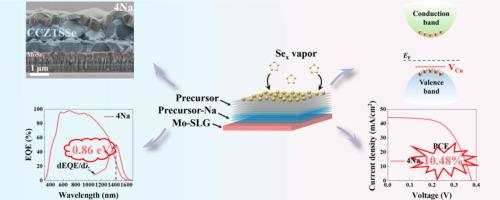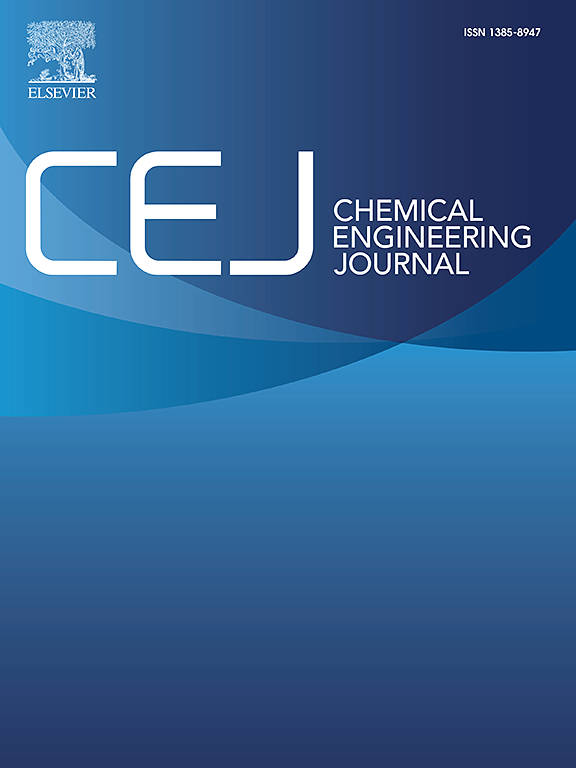Dominant defect and microstructure transformation engineering for highly efficient low-bandgap stannite solar cells
IF 13.3
1区 工程技术
Q1 ENGINEERING, CHEMICAL
引用次数: 0
Abstract
To meet the requirements of high-efficiency multi-junction tandem, it is imperative to seek cost-effective low-bandgap bottom subcell candidates. The bandgap of Cu2ZnSn(S,Se)4 (CZTSSe) can be effectively narrowed by Cd alloying with the lowest achievable bandgap of 0.87 eV after 60 % Zn substitution by Cd. However, the low-bandgap Cu2CdZnSn(S,Se)4 (CCZTSSe) is not efficient, majorly owing to the poor crystallinity of thin films and severe non-radiative recombination. Herein, we report an effective approach to enhance the crystallinity of CCZTSSe via in situ Na-addition in the bottom precursor. Sodium attracts Se within the bottom layers, facilitating the grain growth. Electrical properties are promoted accordingly, with the reduced interface defect densities, modified grain boundaries and superior Ohmic contact at the back interface. The most significant improvement is the dominant defect transformation, from detrimental deep CuCd to benign shallow VCu. These advances enable non-radiative recombination to be greatly suppressed both at the interface and in the bulk. Eventually, an efficiency of 10.48 % has been achieved, which is the highest reported efficiency for stannite solar cells. This is a significant step forward on the road to applying CCZTSSe in future tandem technologies.

求助全文
约1分钟内获得全文
求助全文
来源期刊

Chemical Engineering Journal
工程技术-工程:化工
CiteScore
21.70
自引率
9.30%
发文量
6781
审稿时长
2.4 months
期刊介绍:
The Chemical Engineering Journal is an international research journal that invites contributions of original and novel fundamental research. It aims to provide an international platform for presenting original fundamental research, interpretative reviews, and discussions on new developments in chemical engineering. The journal welcomes papers that describe novel theory and its practical application, as well as those that demonstrate the transfer of techniques from other disciplines. It also welcomes reports on carefully conducted experimental work that is soundly interpreted. The main focus of the journal is on original and rigorous research results that have broad significance. The Catalysis section within the Chemical Engineering Journal focuses specifically on Experimental and Theoretical studies in the fields of heterogeneous catalysis, molecular catalysis, and biocatalysis. These studies have industrial impact on various sectors such as chemicals, energy, materials, foods, healthcare, and environmental protection.
 求助内容:
求助内容: 应助结果提醒方式:
应助结果提醒方式:


